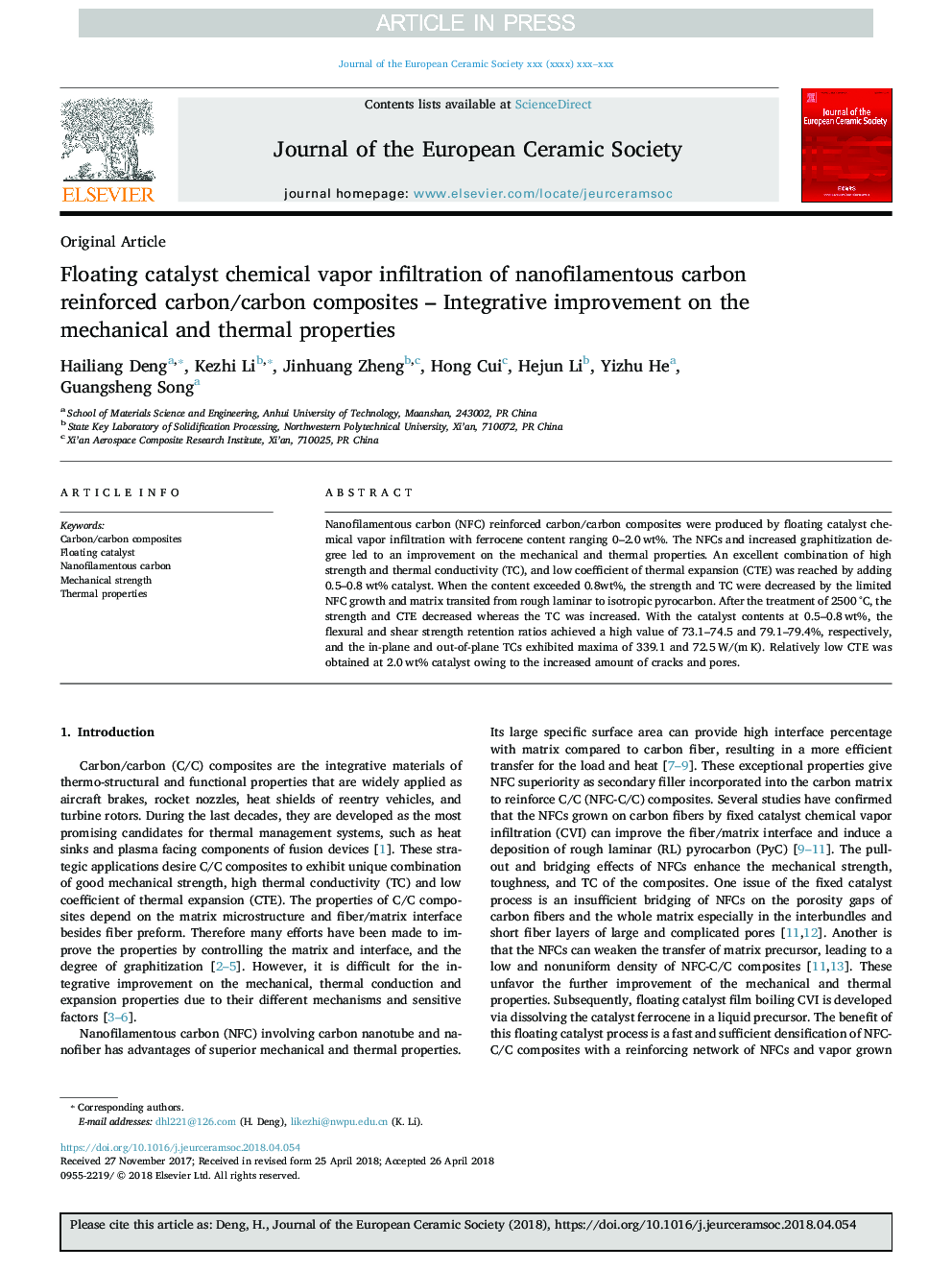| Article ID | Journal | Published Year | Pages | File Type |
|---|---|---|---|---|
| 7897925 | Journal of the European Ceramic Society | 2018 | 11 Pages |
Abstract
Nanofilamentous carbon (NFC) reinforced carbon/carbon composites were produced by floating catalyst chemical vapor infiltration with ferrocene content ranging 0-2.0â¯wt%. The NFCs and increased graphitization degree led to an improvement on the mechanical and thermal properties. An excellent combination of high strength and thermal conductivity (TC), and low coefficient of thermal expansion (CTE) was reached by adding 0.5-0.8â¯wt% catalyst. When the content exceeded 0.8wt%, the strength and TC were decreased by the limited NFC growth and matrix transited from rough laminar to isotropic pyrocarbon. After the treatment of 2500â¯Â°C, the strength and CTE decreased whereas the TC was increased. With the catalyst contents at 0.5-0.8â¯wt%, the flexural and shear strength retention ratios achieved a high value of 73.1-74.5 and 79.1-79.4%, respectively, and the in-plane and out-of-plane TCs exhibited maxima of 339.1 and 72.5â¯W/(mâ¯K). Relatively low CTE was obtained at 2.0â¯wt% catalyst owing to the increased amount of cracks and pores.
Related Topics
Physical Sciences and Engineering
Materials Science
Ceramics and Composites
Authors
Hailiang Deng, Kezhi Li, Jinhuang Zheng, Hong Cui, Hejun Li, Yizhu He, Guangsheng Song,
